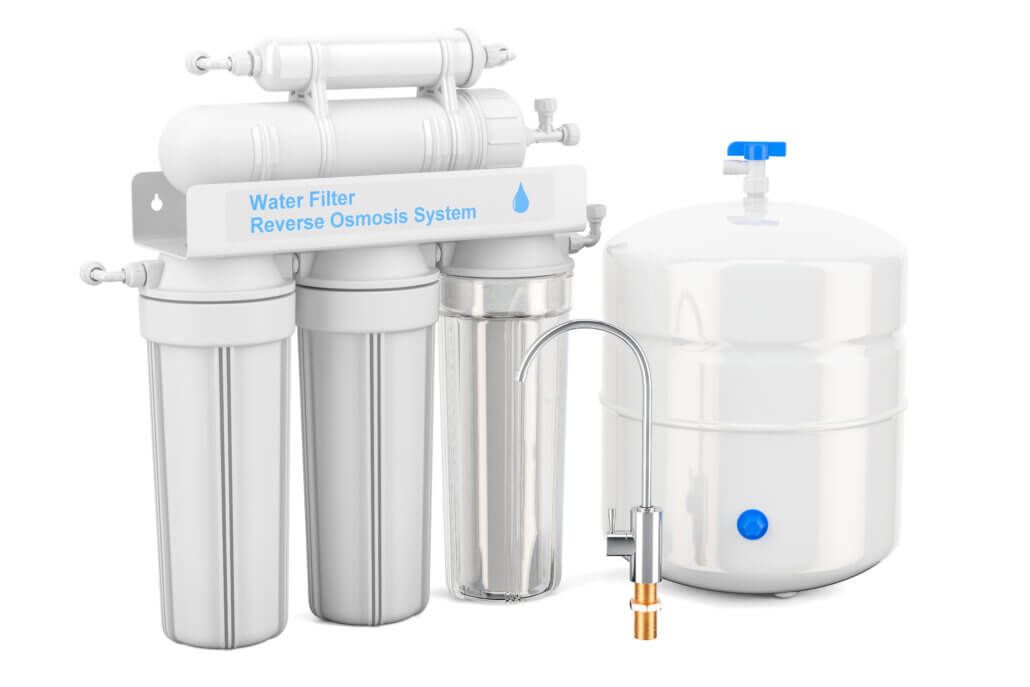
Water is a fundamental resource, essential for life and a myriad of industrial processes. However, ensuring its purity and safety often requires advanced filtration methods. One such method that has gained widespread recognition is reverse osmosis (RO).
In this blog, we take a closer look into the basics of reverse osmosis: what it is, how it works, and why it’s importance when it comes to water treatment.
What is Reverse Osmosis?
Reverse osmosis (RO) is a water purification process that removes unwanted contaminants, solid substances, large molecules, and other unwanted particles from water by using pressure to force water molecules through a semipermeable membrane.
During this process, the contaminants separated from the water and can be flushed away leaving clean, safe, drinking water.
The principle behind RO is simple yet highly effective: it relies on the natural process of osmosis but in reverse.
How Does Reverse Osmosis Work?
Pre-Filtration: Before reaching the membrane, water passes through pre-filters that remove larger particles, sediment, and chlorine. This step helps protect the RO membrane from damage and prolong its lifespan.
Pressure Pump: A pressure pump applies pressure to the water, forcing it through the semi-permeable membrane. This pressure is necessary to overcome the natural osmotic pressure and facilitate the separation of pure water from contaminants.
Semi-Permeable Membrane: The heart of the RO system, the semi-permeable membrane, allows water molecules to pass through while blocking dissolved solids, contaminants, and microorganisms. The membrane’s pore size is incredibly small, typically measured in microns, ensuring thorough filtration.
Product and Reject Streams: As water moves through the membrane, it separates into two streams: the permeate, or product water, which is clean and purified, and the reject stream, which contains concentrated impurities and is discharged or recycled.
Post-Filtration: Finally, the permeate undergoes post-filtration to further polish and enhance its quality before consumption or use.
Importance in Water Treatment
Reverse osmosis plays a crucial role in water treatment for several reasons:
Removal of Contaminants: RO systems effectively remove a wide range of contaminants, including dissolved salts, heavy metals, chemicals, pesticides, bacteria, and viruses, ensuring safe and clean drinking water.
Improved Taste and Odour: By eliminating impurities, reverse osmosis improves the taste, odour, and overall quality of water, providing a refreshing and enjoyable drinking experience.
Health Benefits: Access to clean, purified water through RO systems helps protect against waterborne diseases and promotes overall health and well-being for both residential and commercial users.
Environmental Sustainability: Compared to traditional water treatment methods and bottled water consumption, reverse osmosis is more environmentally friendly, reducing plastic waste and energy consumption.
Versatility: RO systems can be tailored to various applications, from residential drinking water purification to industrial processes, making them highly versatile and adaptable to different needs.
Conclusion
Reverse osmosis is a highly effective water purification process that removes contaminants and impurities to produce clean, safe, and great-tasting water. Its importance in water treatment cannot be overstated, as it ensures access to high-quality water for drinking, cooking, manufacturing, and numerous other applications. Whether at home, in businesses, or in large-scale industries, reverse osmosis continues to be a cornerstone of modern water treatment solutions, offering reliability, efficiency, and peace of mind.
